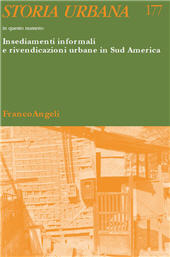Historia urbana de una favela en Río de Janeiro : el Trabajo Social en la Favela Praia do Pinto en la segunda posguerra
39-58 p.
The Praia do Pinto favela was one of the city's best-ÂÂknown favelas until its destruction in 1969. Located in a noble area of the city, living conditions were very precarious. This article seeks to analyze how the local precariousness of the favela has manifested itself as a political project. Our hypothesis is that the apparent tolerance of the public authorities towards the favelas was also manifested, at least in those located in upscale neighborhoods, with rigid control over possible local and housing improvements. The precariousness of these places was a kind of political project, and tolerance could not be transformed into de facto recognition of these places. The Catholic institution Fundación León XIII played an important role in maintaining its precariousness, exercising strong control over the daily practices of its inhabitants.
This article will initially present the actions of the Leon XIII Foundation in the favela of Praia do Pinto in the second post war period until the end of the 1950s, based on the analysis of the family visitation records of the Foundation's Social Work. The article also discusses how the inhabitants of the Praia do Pinto favela were integrated into the city, both through the use of and access to local social resources and, mainly, through their insertion into the labour market. [Publisher's Text].
Forma parte de
Storia urbana : rivista di studi sulle trasformazioni della città e del territorio in età moderna : 177, 1, 2024-
Artículos del mismo número (disponibles individualmente)
-
Información
Código DOI: 10.3280/SU2024-177003
ISSN: 1972-5523
MATERIAS
KEYWORDS
- Favelas Fondazione Leon XIII Lavoro sociale Secondo dopoguerra, Tolleranza precaria
- Favela, Leon XIII Foundation, Social Work, Second Post-ÂÂWar Period, Precarious Tolerance


